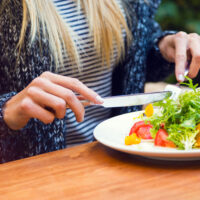
Diet Tips To Follow For Better Bowel Movements
One of the most common digestive problems faced by individuals, constipation is characterized by a difficulty in passing stools and fewer than three bowel movements in a week. It affects more than 2.5 million Americans and is likelier to affect people aged 65 or older, those confined to bed, pregnant women, children, those with poor diets, and very little physical exercise. Occasional cases of the condition are seen quite frequently but go away on their own within a few days. Chronic constipation, however, is more severe and can lead to discomfort in everyday life. Symptoms and causes of constipation Having lumpy or hard stools, a sustained feeling of something stuck in the rectum, the need for external intervention to help move the stool, and fewer than three bowel movements in a week are symptoms of chronic constipation. An unhealthy diet is the biggest cause of the condition. Certain foods and adequate water help make the stool soft, thus easing its removal through the colon. Low-fiber diets and dehydration, on the other hand, result in hard and dry stools that get stuck in the colon. Additionally, travel or other changes in nature, certain medications such as high calcium antacids, diseases like diabetes and Parkinson’s disease, irritable bowel syndrome (IBS), and hormonal problems can also result in constipation.
Read More. 














